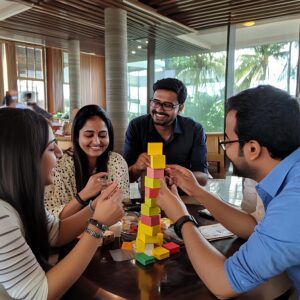Key Elements That Make a Trade Show Successful
Clear Objectives and Strategic Planning
A successful trade show starts with clearly defined goals. Whether the aim is to generate leads, launch a new product, or strengthen brand visibility, setting measurable objectives guides every aspect of the event. Strategic planning involves selecting the right venue, scheduling the exhibition at an optimal time, coordinating logistics, and preparing a detailed timeline for marketing, booth setup, and participant engagement. A well-thought-out plan ensures the trade show runs smoothly and achieves its intended results.
Engaging Booth Design and Interactive Experiences
The design of exhibition booths plays a crucial role in attracting visitors. Creative, visually appealing, and interactive booths encourage attendees to explore products and services, fostering meaningful interactions. Incorporating live demos, digital displays, and immersive experiences enhances engagement, leaving a lasting impression on visitors. Successful trade shows prioritize visitor experience, making it enjoyable, informative, and memorable.
Effective Marketing and Follow-Up Strategies
Promoting the trade show to the right audience is essential for high attendance and participation. Leveraging a mix of digital marketing, social media campaigns, email outreach, and traditional advertising ensures the event reaches potential visitors and exhibitors. Post-event follow-ups, including surveys, feedback collection, and lead nurturing, help maximize ROI and strengthen business relationships established during the exhibition.
Conclusion
A successful trade show combines careful planning, engaging experiences, and effective marketing to create value for exhibitors and attendees alike. By focusing on clear objectives, immersive engagement, and strategic promotion, organizers can ensure a trade show not only attracts attention but also drives meaningful business outcomes and lasting industry connections.














Post Comment